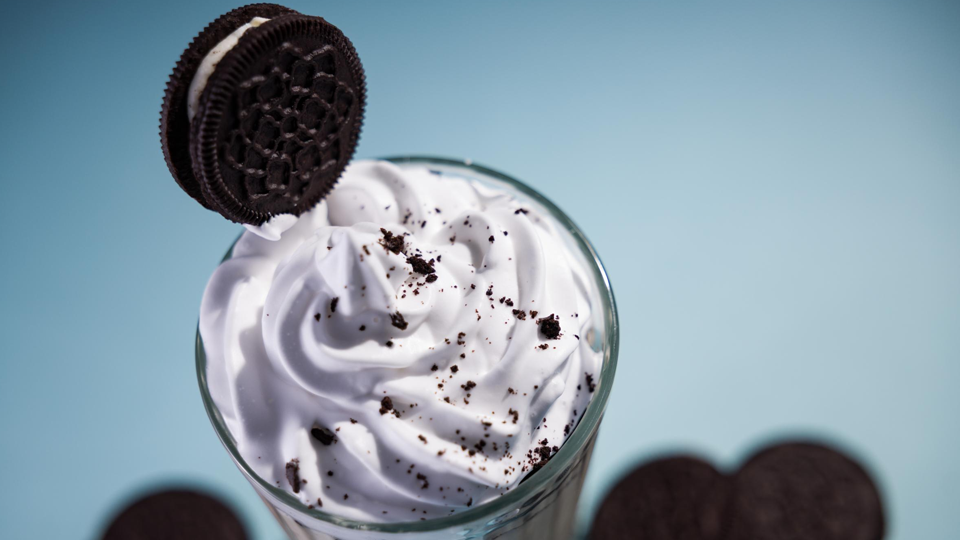Halloween is over, which means leftover candy is everywhere — on store shelves and in our pantries. Holidays centered around sugar can sometimes make us feel guilty about what we eat. If you’re tempted to sneak some of your kids’ candy, you’re not alone!
Smart snack choices can be a powerful tool to help you achieve greater nutritional wellbeing without missing out on delicious bites. Snacking to control feelings of hunger can also be an important part of your Shake Day. To use snacking to your advantage, it helps to know what makes a snack healthy.
Here are five guidelines to follow on your way to smarter snacking:
1. Snacks Should Keep You Satisfied Between Meals
If you let yourself get too hungry between meals, it’s easy for your appetite to take over, and poor choices can sneak in, like grabbing for that leftover Halloween candy. Extreme hunger can also lead to low energy, irritability, or trouble focusing. Making smart choices is much easier when your stomach isn’t growling.
Protein-rich snacks are your best option for managing appetite effectively, as protein satisfies your body and hunger for longer periods of time than other snacks.1,2 Protein-packed snacks like turkey and cheese roll-ups, Greek yogurt, egg white bites or hard-boiled eggs, and Snack Bites help curb cravings and keep your energy steady until your next meal.
2. Snacks are Fuel
Eating small snacks every few hours helps keep your body in muscle-building and fat-burning mode. Every time you eat a meal or a snack, your body spends some energy to convert that food to fuel for your metabolism in a process called thermogenesis. This process makes protein extra important, as it gives your body more fuel and energy than carbohydrates or fats.3
3. Snacks Should Be the Right Size for Your Goals
Choosing snacks that provide your target number of calories and energy can make snacking an effective part of your wellness strategy. Empty calories from snacks add up quickly, but an oversized portion of even the most balanced snack foods will still provide more calories than your body needs.
For most people, snacks that are between 100 and 200 calories will help you stay within your target calorie range while keeping your hunger satisfied. A great tip for effective snacking is preparing pre-portioned snacks ahead of time.
100-200 Calorie Snack Ideas
100 Calories
- Hard-boiled egg (large): ~6g protein, 70–80 calories
- 14 Protein Crackers: 10g protein, 100 calories
- Plain nonfat Greek yogurt (1/2 cup) with cinnamon: ~10g protein, ~80–100 calories
- Turkey or chicken slices (2 oz): ~10–12g protein, ~90 calories
- 1 Plant-Based Snack Bites: 5g protein, 100 calories
- Low-fat string cheese (1 stick): ~7g protein, ~80 calories
- Almonds (14–15 nuts): ~5g protein, ~100 calories
- Low-fat cottage cheese (1/3 cup): 8g protein, ~80 calories
- Mini tuna pouch (drained, 2 oz) : 13g protein, ~90 calories
200 Calories or Less
- 2 hard-boiled eggs: 12g protein, ~140-160 calories
- 1 scoop IsaLean® Protein Shake powder + water: 12g protein, 120 calories
- ½ cup low-fat cottage cheese + cucumber slices – 14g protein, ~100–120 calories
- 1 Energy Bites: 4g protein, 110 calories
- Mini tuna pouch (3 oz) with celery sticks: 20g protein, ~120 calories
- 2 tbsp roasted edamame: 12g protein, ~160 calories
- 1 oz beef or turkey jerky + 1 cup raw veggies: 9–10g protein, ~150 calories
- Greek yogurt (1/2 cup) + berries (1/2 cup): 12g protein, ~120 cal
- String cheese + 1 small apple or pear: 7g protein, ~150 cal
4. Create a Plan and Snack on a Schedule
The key difference between mindless snacking and smart snacking is intentionality. Healthy snacking is purposeful and can help control hunger while providing nutrients your body needs.
- Portion control: Keep snacks between 100–200 calories to fit your goals.
- Timing matters: Schedule snacks at strategic times when possible. Eat snacks at times when energy dips, like midmorning or after exercise, to curb cravings and stay energized.
- Prep ahead: Plan and prepare snacks in advance, so the healthy option is always easy to reach.
- Choose wisely: Pick snacks that are both tasty and nutritious to enjoy while fueling your body.
5. Practice Mindful Snacking
Fitting snacking into your schedule may make it tempting to snack while watching TV or working, but it’s important to snack mindfully. This means taking a few minutes every few hours to eat your snack intentionally — like you would a meal. Mindless snacking can lead to overeating and losing focus on your nutritional goals. Plus, snacking mindfully can be a great way to practice being present and peaceful, even for just a few minutes at a time.
Cultivating healthy snacking habits can be a powerful tool for nutritional wellbeing and can be easy to implement into your daily routine. Isagenix offers convenient, nutrient-packed snack options that can satisfy your cravings with sensible portion sizes that fit with your wellness goals and help you make healthier snack decisions. Healthy snacks can be just as accessible as the candy stash or leftover Halloween treats, and they will be much better for your energy, focus, and health, too!
References:
- McCrickerd K, Yeomans MR. Optimising foods for satiety. Trends Food Sci Technol. 2015;41:149-160
- Leidy HJ, Campbell WW. The effect of eating frequency on appetite control and food intake: brief synopsis of controlled feeding studies. J Nutr. 2011;141(1):154-157.
- Acheson KJ, Blondel-Lubrano A, Oguey-Araymon S, et al. Protein choices targeting thermogenesis and metabolism. Am J Clin Nutr. 2011 Mar;93(3):525-34.





